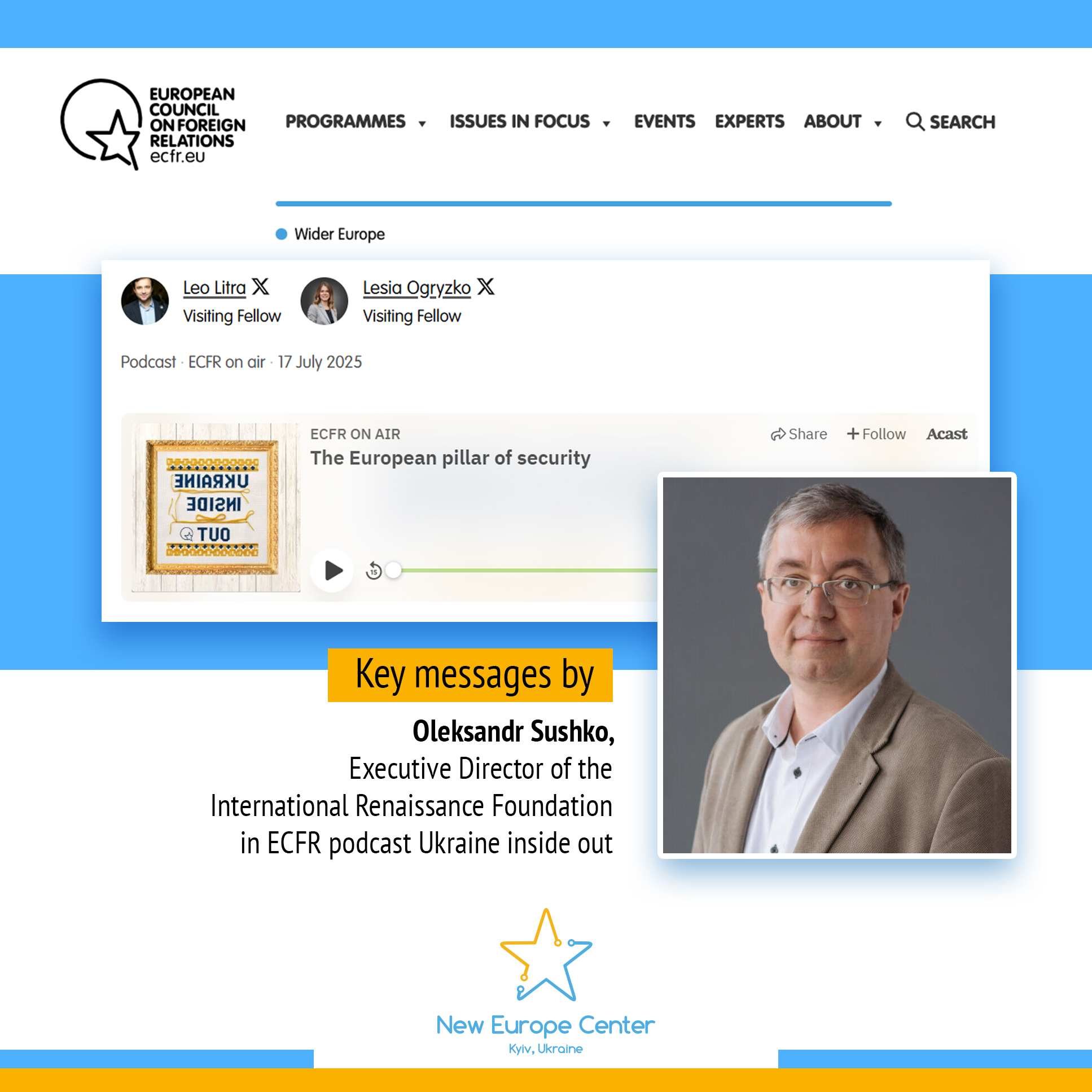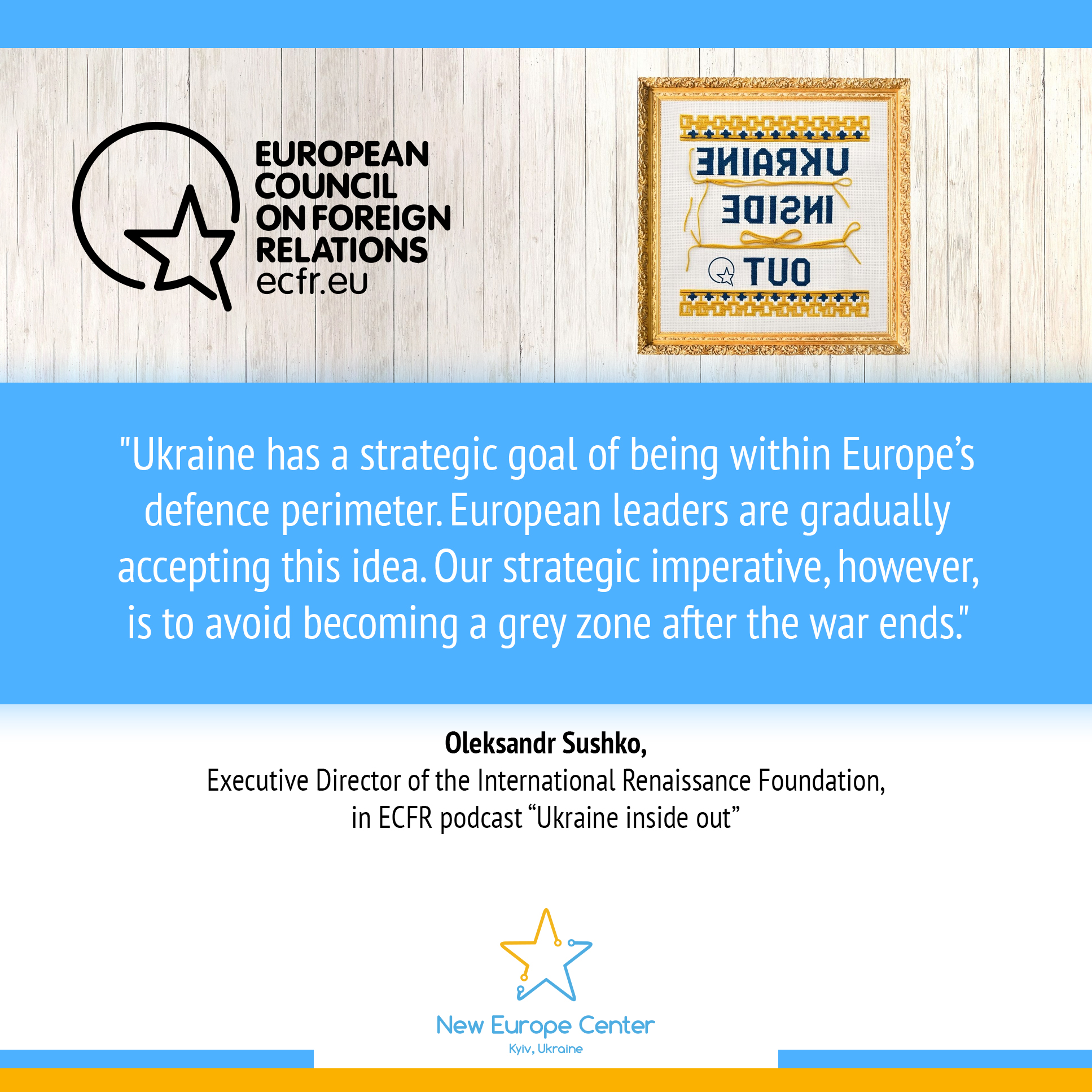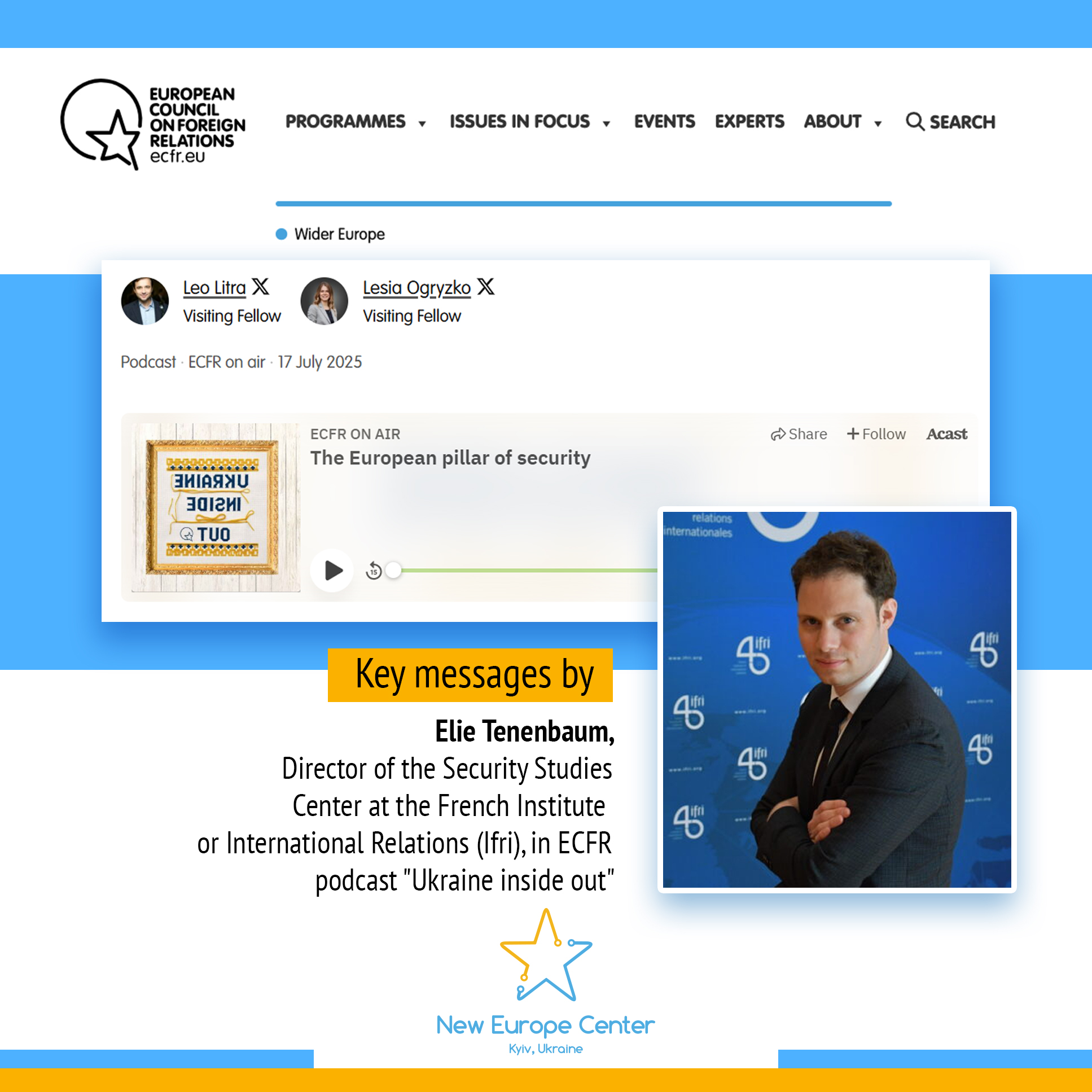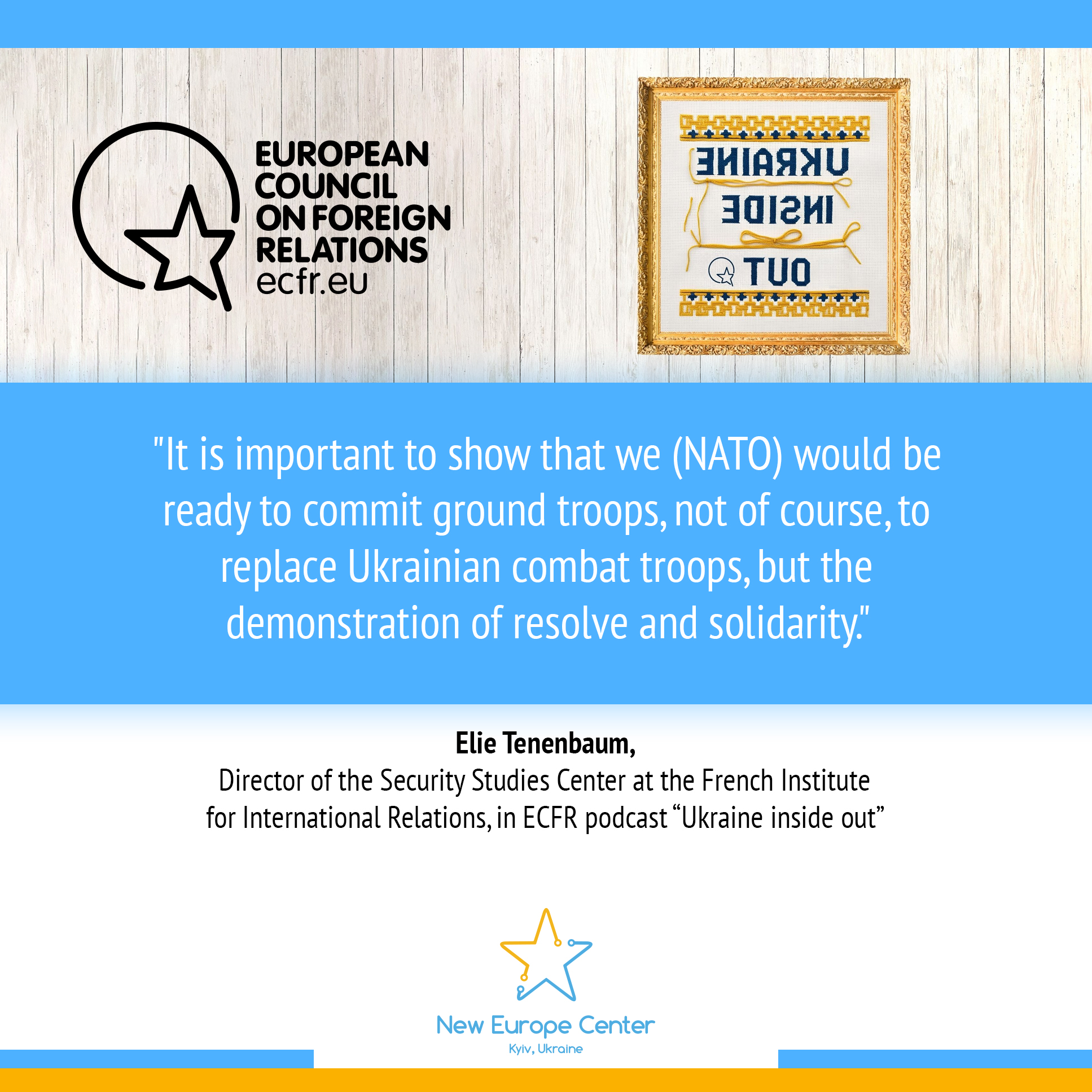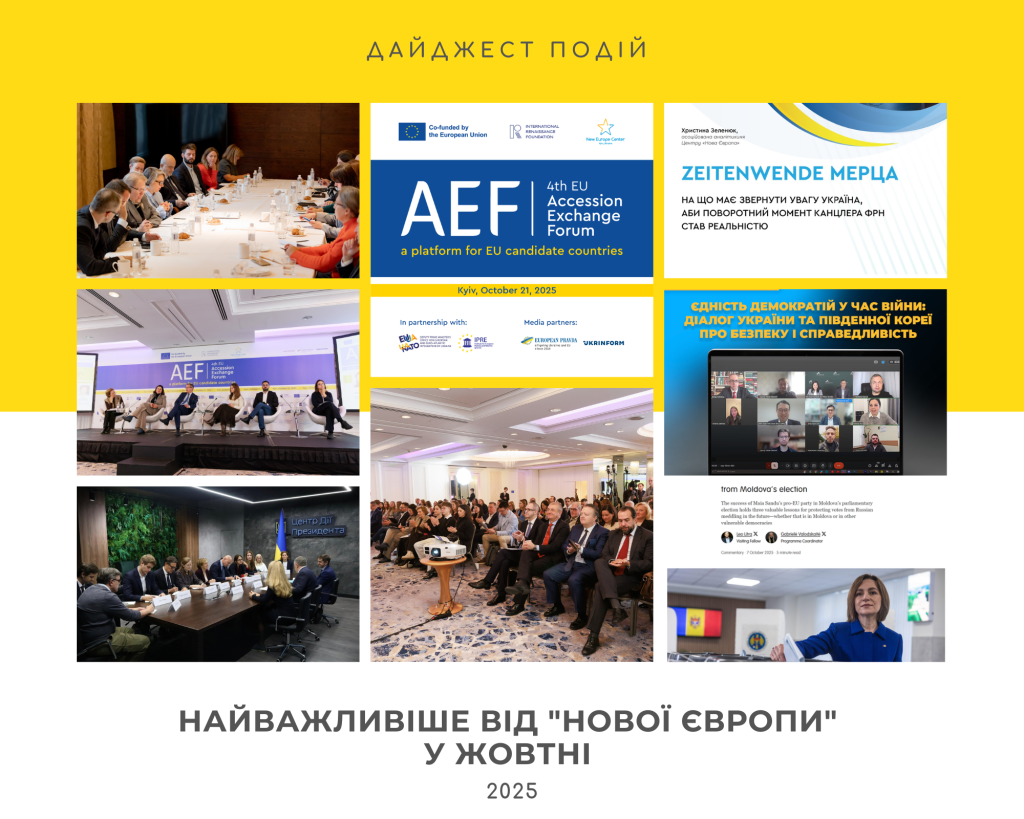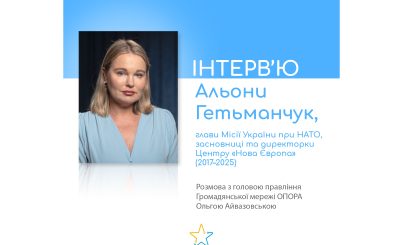The next episode of ECFR podcast mini-series “Ukraine inside out” is on the air!
The second episode “ The European pillar of security” is hosted by Leo Litra, Senior Research Fellow at the New Europe Center, Visiting Fellow at ECFR, and Lesia Ogryzko, Head of the International Cooperation Department at RISE Ukraine – Coalition for Reconstruction, Visiting Fellow at ECFR.
In this episode Leo Litra and Lesia Ogryzko welcome Oleksandr Sushko, Executive Director of the International Renaissance Foundation, and Élie Tenenbaum, Director of the Security Studies Center at the French Institute for International Relations, to explore if—and what—the recent NATO summit delivered for Ukraine.
Together, they unpack how can a “coalition of the willing” can fill the gap? How can Kyiv position itself in a rapidly evolving transatlantic landscape? And what does Europe assuming more responsibility for its own security mean for Ukraine?
Listen the full episode via the link here.
Key messages by Oleksandr Sushko, Executive Director of the International Renaissance Foundation:
- The NATO summit was not as disastrous as some might have expected. Thanks to the effective leadership of Secretary General Mark Rutte and European leaders, they managed to accommodate Trump’s current agenda and attitudes, and found a formula acceptable to all parties.
- The United States is gradually departing from its traditional commitments to Europe. The task for European leaders now is to make this departure as smooth as possible and to gain time to adapt their own strategies, including military development, defence policy, and other areas where the U.S. has held a dominant role in Europe for decades.
- For Ukraine, participation in the NATO summit was important. Certainly, there was no opportunity to pursue any ambitious agenda regarding NATO accession at this time. It has been postponed until better circumstances arise. Still, what is positive is the growing understanding that Europe must demonstrate a stronger commitment to defence and the military sector. In my opinion, the main issue is not the percentage of spending, but rather the strategy – what is the end goal in achieving effective security and defence?
- A positive element of the summit’s outcome is that European allies may allocate part of their defence spending to support Ukraine. This will be included within the 5% target. It is a flexible formula that allows room for maneuver by European allies. Ukraine has much to offer. There are capabilities in Ukraine that are not available in EU member states, particularly in arms production. Ukraine may become a platform and space for cooperation to develop and produce new high-tech defence systems. Therefore, the upcoming months and years should be used not just to promise spending, which offers no guarantee, but to reorganize the overall strategy for the development of armed forces, military technology, and defence production capacities.
- Ukraine has a strategic goal of being within Europe’s defence perimeter. European leaders are gradually accepting this idea. I can see the shift is underway, although it is not easy. There are still fears and politicians who exploit public anxiety about being drawn into war, suffering its consequences, or becoming entangled in Russia’s conflict with Ukraine. Our strategic imperative, however, is to avoid becoming a grey zone after the war ends.
- Ukraine aspires to become a platform for more advanced international efforts to build not just a defence industry, but a high-tech military-industrial complex. I believe Europe will invest in this sector. Ukraine possesses skills and technologies that many other countries do not. We have a chance to move in both directions: to build defence industrial capacity within Ukraine, and to expand the export of our technologies and cooperation with other countries to establish long-term production chains. This will anchor us more closely to European countries and make us part of a complex and international defence production market, in which Ukraine will have a natural and strong place.
Key messages by Elie Tenenbaum, Director of the Security Studies Center at the French Institute for International Relations:
- At the NATO summit, some of the major tensions were toned down. During the first months of President Trump’s return to office, three breaking points emerged. The first was the speech by U.S. Defence Secretary Pete Hegseth at the UDCG meeting in Brussels in February, where he declared that Europe must rapidly assume responsibility for its own defence and that the U.S. may reduce its presence on the continent. The second was Vice President J.D. Vance’s address at the Munich Security Conference, where he challenged the value of democracy and bilateral relations, criticizing Ukraine, Romania, and even Germany. The third breaking point relates to broader U.S. geopolitical posture.
- European-U.S. relations, the level of American commitments, contingency planning, defence strategies, and support for Ukraine. These remain key uncertainties, even after the NATO summit in June. These factors continue to prevent Europeans from organizing in anticipation of what the U.S. will or will not do in the near future.
- It was crucial for the two European nuclear powers, France and the United Kingdom, to present a united front, generating momentum and leverage. This leadership has succeeded in creating not just a military coalition, but a genuine political and military Coalition of the Willing, with a growing number of countries involved and a joint headquarters staffed by dozens of officers working as military planners.
- This Coalition of the Willing has outlined four key operational tracks to provide security guarantees: defending the skies, protecting the seas, land demonstration – meaning the deployment of forces for both reassurance and deterrence – and regeneration, which focuses on helping Ukraine develop its future force model for 2030, including the deployment of military trainers. Deploying any part of these operations prior to a ceasefire could incentivize Russia to take negotiations more seriously.
- Ukraine’s defence and resistance are intrinsically linked to the defence of Europe and broader European security. If Ukraine were not holding back 600,000 Russian troops, those forces might already be massing on the borders or even inside the territories of other European or NATO countries.
- When conducting military planning, wargaming, or strategic foresight at my think tank, I always ask the same question: What happens to Ukraine in this scenario? Everything changes depending on whether Ukraine is still fighting, remains independent, or is defeated, gray-zoned, or brought under Russian control.
- People still attempt to separate European security and NATO war planning from Ukraine, but after everything that has happened, this is no longer possible.
- On my last visit to Kyiv – thanks to the support of the New Europe Center – I was struck by the vibrant resilience of Ukrainian society. I had never before witnessed a modern, democratic, digital-age civil society mobilize so effectively for national defence. I’ve visited many war zones around the world, but these were non-European countries at different levels of development. I had never seen a digital-age society at war. That, more than anything else, left a deep impression on me during my last trip to Ukraine.



